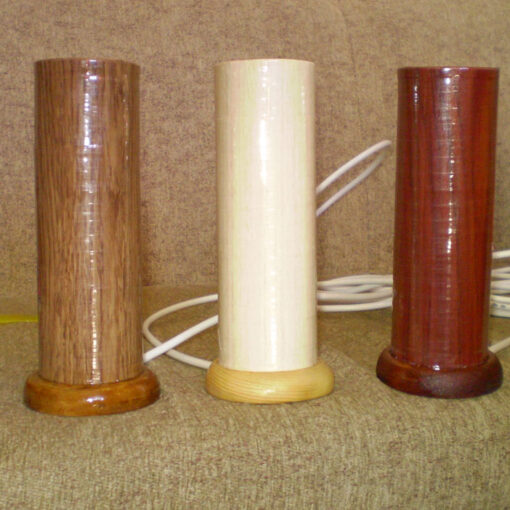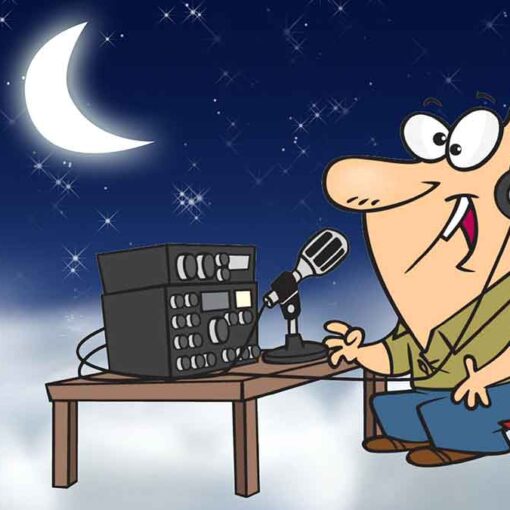
DX clusters have completely replaced local and international DX information networks in recent years.
Primary Purpose
Which DX stations are currently active and on what frequencies?
DX clusters are part of a global (worldwide) network transmitting information in real time. They are interconnected and by accessing one of them, you have all the information from the network. It is logical to choose a nearby cluster and use the filters appropriately – it is not only important which DX is heard, but also where it is heard from.
See for example HA6DX DX Cluster Web Interface
There are two types of systems:
- For entering objects (spots) – interesting DX information for others to use.
- To use the DX information of interest to you.
What are you entering?
Rare DX stations of interest to DX hunters. Example: 14025 ZK1DX QSX UP5.
Don’t send information that has no value. Do not mention stations from countries where there is a lot of amateur radio activity, such as W, F, G, ON, etc., unless there is a reasonable reason that makes the station valuable. But you can enter for example W6RJ on 160m heard in Europe because we don’t work every day W6 from Europe.
Before entering a DX station, first check that someone else has not entered the same initial.
Watch out for mistakes! Sometimes wrong initials can be found in logs and reports because the operator has been working with a station whose initial he did not even accept and blindly copied the wrong initial from the DX cluster.
What information is available and how do we retrieve it?
Activity Information: DX’s entered. They appear automatically on your screen in chronological order. You can retrieve objects by ranges (eg sh/dx on 20 m shows the last 10 objects on 20 m, sh/dx 25 on 20 m shows the last 25 on 20 m), by initial (eg sh/dx ZK1DX, or sh/ dx ZK1DX 20), or as a combination of range and initial (eg sh/dx ZK1DX 20 on 15 m).
WWV (see https ://www.nist.gov/pml/time-and-frequency-division/time-distribution/radio-station-wwv (radio station).
Solar activity index: common commands are sh/wwv and sh/wcy.
QSL Information: From most DX clusters you can retrieve QSL information using sh/QSL call (call is the corresponding initial). If this option does not exist, type sh/DX call 25. You will get information about the last 25 appearances of this station, and it is very likely that at least one of them will have QSL information in the comment field. A third option is to enter sh/DX call QSL. This will present you with a list of the last 10 entries for this station where the word QSL or via is present in the comment field.
Some DX clusters may not use all of these commands, so you may find QSL information via an Internet search engine.
It is not good practice to enter a station and write in the comment field “QSL info please”. The purpose of this field is to provide additional useful information about the DX station. It is not a place to ask questions.
Depending on the DX cluster software, the commands noted above may vary slightly. Look in the DX cluster help file first.
An object appears – a new country for you. Now what?
Don’t start calling the DX station blindly.
Make sure you receive this station well enough, check that the call sign is entered correctly.
Make sure you hear the DX station’s instructions before calling it (what frequency is it on, does it work with everyone or a specific geographic area, or does it call by numbers?).
Follow the directions explained in Pailapi. Good luck!
Things that have no place in a DX cluster
- To introduce yourself. What is this? A personal advertisement to the whole world saying: Here on this frequency is me, please call me. Needless to say, this is not amateur radio. If you want to make QSOs, call CQ or answer stations that call CQ. Introducing yourself to contests is punishable by disqualification.
- Outrageous actions. Example: You are working an interesting DX station that has responded to your CQ. After the connection is completed, you enter into the cluster the initial of that station that was here but has already left this frequency after the contact is completed because it was your frequency. This spot has no value to the DX community since the DX station is gone, but at the same time you are attracting a bunch of DXers to your frequency hoping you can work another DX. This practice seto annoys the DXers.
- Bragging. Entering an object is not done to tell the world how great you are. Don’t enter a DX station (which has already been entered several times by the way) with the addon: I finally worked it out… In this case, you’re not announcing the DX station, you’re just bragging, telling the world how great you are. Modesty is a virtue.
- Enter a friend. A good friend of yours keeps calling CQ with no response. You want to support him and you put him in the cluster even though he is not a DX station at all. Don’t do it. Neither your friend nor you will gain respect in the eyes of the DX community after such an act.
- You want your friend to introduce you. It’s an introduction to yourself, just in a different form. Introducing yourself is immoral, so don’t ask your friend to do it too.
- Continuously cheering. These are the ones who keep entering their favorite station during a contest. At times like these, you look like cheerleaders pushing cyclists during a mountain race. This is not fair and it is not sportsmanlike.
- To enter an object in a way that is a private message. We must understand that every object, every message in the DX cluster is sent to thousands of hams all over the world. DX clusters are accessible via the Internet and even your local DX cluster is no longer local but part of the global network. Unfortunately, some spots are pure private messages, as in this example: НА7хх enters an object: VK3IO at 1827 with a comment QRV???, which is obviously not an object, but a private message (written in the comment field). Another example: UAOxxx enters ZL2yyy on 3505 kHz and adds ur 339, my RST 449? Please confirm. This guy is making a fool of himself. His reputation in the DX community has since collapsed!
- Using DX clusters as a worldwide chat channel. With the Talk function, you can send individual messages to another ham in your local DX cluster. Some DX clusters have similar features where you can chat without side company with a user of another DX cluster, of course if the two clusters are connected (over the radio or via the Internet). The Announce Full (To All) function is quite different. Any message sent through this function will reach the users of all the interconnected clusters around the world, which at any given moment can be many thousands. Be very careful when using this feature. Most To All ads are effectively about a single person, and the other 9,999 are forced to read a message that has no value to them. Example: in a message sent by ON7xxx let’s read something like ON4xx, good morning France. Another example: To everyone from DFOxx: We are waiting for you at K3714. What could this mean? And, unfortunately, thousands of such examples can be seen at any time. Never use the Announce Full feature as a chat channel. Also, never use this feature to make an argument or attack someone. The world is watching you! Send only messages that are of interest to the vast majority of DXers. Example: you might announce that the DX-pedition has just changed band or frequency, or that they will be on what frequency at what time, etc. The basic rule is: Messages for all (To All) should really be interesting for everyone. If the message is not interesting to everyone (or the majority of them), do not send it using the To All function.
- Using a DX cluster with a foreign initial. It happens that some damaged brains register in a DX cluster with a foreign initial and perform absolutely unacceptable actions. This is even worse than anonymous transmission, as the initial of an unsuspecting radio amateur is disgraced. Never react if you encounter this situation in a DX cluster.



